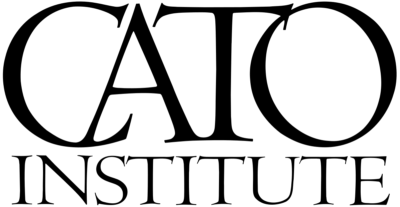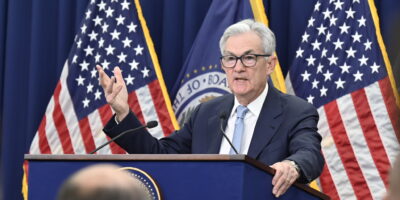34th Cato Monetary Conference: Central Banks and Financial Turmoil
This piece originally appeared in Alt-M
By Ari Blask
More than two hundred people came to Cato last Thursday, November 17th, for the 34th Annual Monetary Conference. Four panels and two keynote speakers covered “Central Banks and Financial Turmoil,” the theme of this year’s conference. In his introduction, CMFA’s James Dorn laid out some of the key issues: What will the long run impact of the Fed’s post-crisis policies be on financial markets? Is the recent strength of equity markets driving Fed policy, or is the Fed the cause of that strength? What happened to the monetary transmission mechanism after the crisis?
Keynote Address: Thomas Hoenig
FDIC Vice Chairman and former President of the Kansas City Fed Thomas Hoenig gave the opening keynote address. Hoenig argued that monetary policymakers are too concerned with short run economic performance, and that this concern leads to policy that is harmful for longer term growth and stability. A consistent easing bias in monetary policy since the enactment of the Humphrey-Hawkins dual mandate has pushed interest rates down and led to asset bubbles. Rather than providing a stabilizing counterweight to the Fed’s mistakes, macroprudential regulation has only worsened moral hazard and the misallocation of capital.
Panel 1: Central Banking and Market Volatility
Moderated by Bloomberg News reporter Craig Torres, the first panel’s speakers considered how central banks affect financial markets. Former BB&T CEO John Allison said that the recent financial crisis is Exhibit A of financial turmoil caused by a central bank. Continual use of monetary policy by the Greenspan Fed to support equity markets contributed to the housing bubble. Universa Investments CEO Mark Spitznagel argued that stock prices fluctuate from firms’ underlying values much more than should occur theoretically because easy money causes bubbles. James Grant pondered why money is no longer a top political issue, as it was before the founding of the Fed. Grant argued that the Fed serves as a “safe space” for Wall Street, protecting it from the volatility of a truly capitalistic market. But this security is ultimately a mirage; not only does the Fed harm growth, it hasn’t quashed the business cycle fluctuations or financial panics that supposedly motivated its founding.
Panel 2: Monetary Mischief and the “Debt Trap”
MIT’s Athanasios Orphanides, former St. Louis VP Daniel Thornton, and former Fed governor Robert Heller joined moderator Josh Zumbrun of theWSJ on the second panel. Orphanides began by pointing out that fiscal and monetary policy are more closely linked than most central bankers let on. Current high debt levels in the U.S., Japan, and the Eurozone are putting pressure on central banks. QE has pushed down government interest payments and increased the proportion of government debt held by central banks. While he thinks advanced economies can grow their way out of the current high debt to GDP ratios, loose fiscal policy will continue to threaten central bank independence. Robert Heller echoed Orphanides’ views on the fiscal-monetary nexus, but was more cautious about current growth prospects mitigating the adverse impact of high debt. QE failed, he said, to stimulate demand; if anything it caused consumption to drop since it forced people to save a higher percentage of income to meet savings targets. Interest payments will shoot up if rates normalize, compounding the effects of debt on the economy. Dan Thornton argued that persistent U.S. government deficits since the 1970s are symptoms of a broader, economy-wide credit trap, caused by the pernicious influence of Keynesian economics. The persistently easy monetary policy and deficit spending Keynesian thinking encouraged harmed household balance sheets and led to asset bubbles in addition to causing excessive government debt.
Luncheon Address: Hon. Phil Gramm
Former Chair of the Senate Banking Committee Phil Gramm gave the post-lunch keynote. Gramm began by debunking a series of common misperceptions about the recession and then made a few comments on the recovery. First, the finance sector was not deregulated in the few decades preceding the crisis. If anything, the PATRIOT Act, Sarbanes-Oxley, the Community Reinvestment Act, and Basel regulatory standards meant a more onerous regulatory system. Gramm-Leach-Bliley, which repealed parts of Glass-Steagall, made the financial system more stable, not less, by allowing for diversification. Regarding the recovery, Gramm blames a regulatory system that in his view turned banks into “public utilities.” Moving forward, he is worried about banks lending out QE money if growth picks up as well as government debt crowding out private borrowing as interest rates increase.
Panel 3: The Problem of a Centrally Planned Monetary System
Atlas Sound Money Project co-director Judy Shelton moderated the day’s third panel, which featured Kevin Dowd, Gerald O’Driscoll, and Tyler Goodspeed. O’Driscoll evaluated a few Fed reform proposals that might lessen the knowledge problem in monetary policy. He supports shrinking the balance sheet as a first step, and further advocated eliminating lender of last resort powers and implementing a monetary rule. He criticized proposals to reduce the influence of the regional Fed banks as irrelevant, and, if anything, likely to foster more groupthink. Kevin Dowd issued a strong critique of post-recession Fed policy. The Fed should have heeded QE’s failure in Japan before adopting it here. While not leading to growth, QE redistributed wealth, benefitting Wall Street. The idea that negative interest rates will somehow stimulate more economic activity is even more perverse than QE. Oxford’s Goodspeed spoke on a bit of a different topic, evaluating the efficacy of deposit insurance using historical evidence. Examining the antebellum United States, he compared contiguous counties in the states with different (private v. public) methods for protecting depositors. In the long run, counties with private systems like double liability for shareholders experienced less bank failure.
Panel 4: Rethinking the Monetary Transmission Mechanism
Steve Hanke, Jerry Jordan, Walker Todd, and moderator George Selgin sat on the final panel. Jordan, former President of the Cleveland Fed, argued that the post-Recession large balance sheet has altered how monetary policy affects the real economy to the point where old understandings of how policy targets (short run interest rates) affect indicators (money supply and interest rates) no longer apply. While the Fed developed methods for conducting monetary policy in the post-QE era like IOER and RRPs, they have not been in use long enough for us to know with certainty if and how they work. Jordan recommended returning to the pre-QE environment by creating a Fed subsidiary for the purpose of holding all the assets purchased during the crisis. Steve Hanke of Johns Hopkins contrasted Jordan somewhat; according to him we can know that money has been tight since the crisis. Money creation is a better measure of tightness or looseness than interest rates, and since the crisis money growth has been slow. Most money, broadly measured, is privately created, and bank regulation has quashed private money creation. QE has only slightly offset slow private money growth. Walker Todd of Middle Tennessee State University argued that the effects of monetary policy are so hard to understand now because policymaking has been especially bad in recent years. QE has not worked, considering the coinciding fall in velocity and the money multiplier it is not clear why anyone thought it would. Given how muddled policy is, Todd is pessimistic about future economic prospects.
Video
Check out full video coverage of each panel along with more information about the conference and speakers here. Papers presented at the conference will be published in a forthcoming edition of the Cato Journal.









